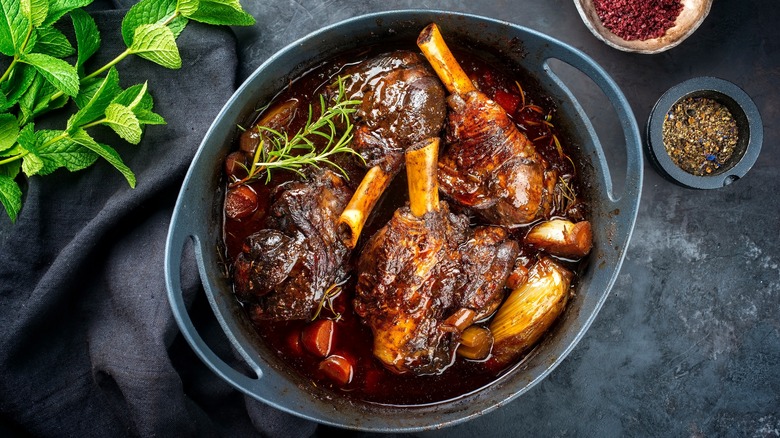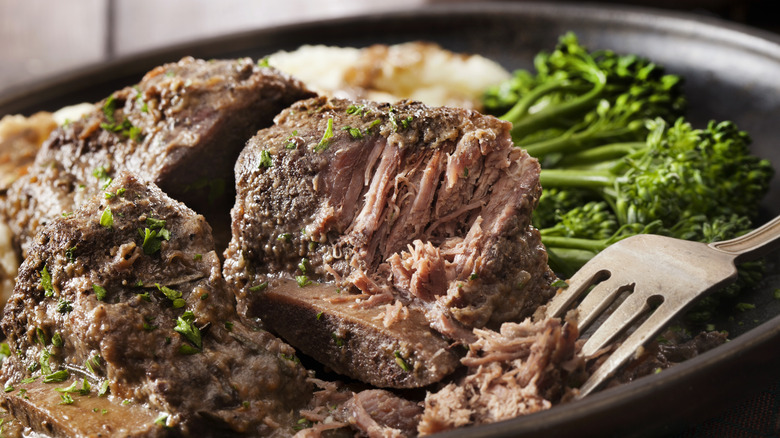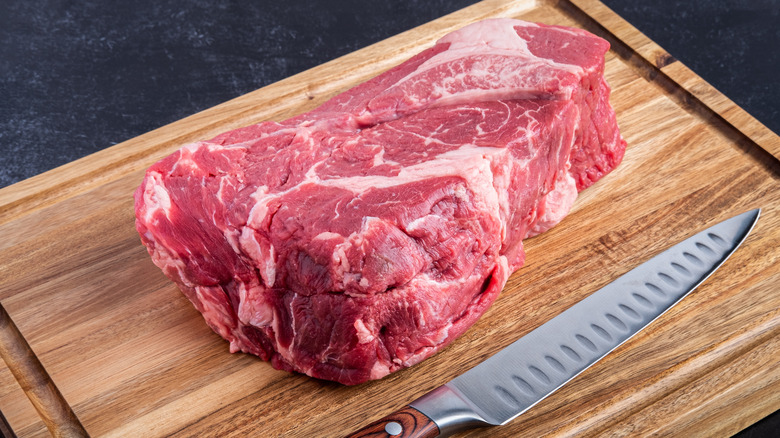Here's How Often You Should Be Checking Your Braised Meat
As long as there's a slow cooker or Dutch oven in the house, you'll always have a fairly easy hearty meal in your back pocket. Thanks to the magic of braising, there are tons of recipes that require very little prep, and the moisture and heat do the rest. It's not all hands-off, however, because it is possible to overcook your pot roast or lamb shank and end up with a disappointing dinner. The goal of braising is meat that's cooked all the way through but remains moist and tender. The key is to follow your recipe carefully and check on the meat every 30 minutes towards the end of the recommended cooking time.
Checking on your braised meat doesn't mean simply looking through the glass lid of the slow cooker, or cracking open the Dutch oven from time to time and peering inside. It's important to know what you're looking for when you open the lid and let any heat escape, which is fork-tender meat.
A lot can happen in 30 minutes
The reason why you have to keep checking on your braised meat is that even though the cooking process is slow, a lot can change in just half an hour. In a cooking experiment for the New York Times, J. Kenji López-Alt braised several cubes of beef over 12 hours and checked on them every 30 minutes. What he found was that between two and three hours the meat started to become tender. Later, between three and four hours the meat started to break down and lose its shape. After four hours, the meat started to get stringy and dry.
While cooking times will vary quite a bit depending on how big of a cut you're braising, Alt's experiment shows that it doesn't take that long for the meat to reach the sweet spot of becoming fork-tender. That term literally means that it's done when you can stick a fork into it, twist it, and the fibers easily flake apart — aka the fork test. To get it right, start checking on your braise every half hour after the midpoint of the cooking time.
Timing is everything
Not only do you want to avoid dry, stringy meat when you're braising, but it's also important to catch your meat when it's perfectly cooked because not all recipes are supposed to come out the same. For example, short ribs should cook for less time so that they still have some connective tissue holding them together and on the bone, while pulled pork is cooked longer so that the meat falls apart when you shred it with a fork. Most decent recipes will tell you what to look for in terms of doneness, which is more of a visual cue than a strict timetable.
Keep an eye on your braise so that you don't overshoot the mark, and consider starting the cooking process at the top of the hour so that you only have to remember to check at the same time every hour. If visually judging your dinner doesn't work for you, don't be shy about setting a timer so that you get a perfectly moist, tender Sunday beef pot roast.


